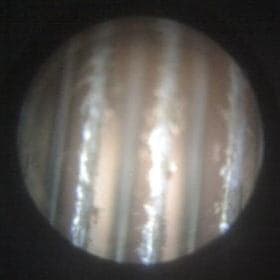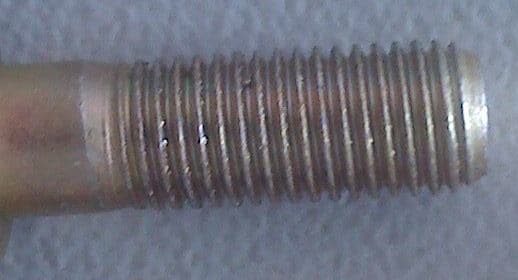
Curated with aloha by
Ted Mooney, P.E. RET

The authoritative public forum
for Metal Finishing 1989-2025

-----
Peeling of Cadmium plating on fasteners
June 30, 2009
Hi,
We have been doing Cd plating since many years for aerospace grade fasteners. Recently we have changed our bath chemistry from NaCN/Cd ratio of 7.5 to approx. 4.5. This is done in our new facility and we are in process of qualification. We do barrel plating for these parts.
We have observed that on the thread crest the Cd plate is getting peeled off. A photo is attached.


We have tried to increase Voltage form 11 to 14 V but the problem could not be solved fully. Our other sequence of operation is Soak clean+Anodic clean+HCl pickle+Cyanide activation+Plate (Intermediate rinse after each steps)+ Bake+Reactivate+Cr Passivation. The peeling is observed after plating and becomes more clear after cr. passivation. We have ensured water break test grade cleaning.
Could you please help identifying reason for this?
Request and early reply.
Thanks,
Plating processor - Bangalore
July 17, 2009
Mr Desai
Though the photograph is blurred it appears the thickness on the crest is high and tends to being nodular . The tumble in the barrel then chips it off.
You did not mention real actual Cyanide and cadmium metal numbers,
?
Re adjust the ratio to MORE Cyanide to metal ratio . This current ratio increases High Current density thickness . More Cyanide to metal ratio will push cadmium into LCD areas and improve the throw thereby equalising the deposit thickness. Thereby reducing excess build up on thread Crests.
Increasing the volts will worsen the situation. Keep volts at a point that allows you to pass about 8 to 12 amps per square foot of work and life may become easier.
I presume your previous plater and previous pretreatment are unchanged. These too constitute problem areas.

Asif Nurie [deceased]
- New Delhi, India
With deep regret we sadly advise that Asif passed away on Jan 24, 2016
Hello,
The fasteners appear to be discolored? Has this been chromate and baked? Now, is your plating just cadmium plating or does it have an under coating?
Remember, fastener treads are very difficult to plate due to the current densities. Cleaning and activation is very critical before plating.
The military specification for Cadmium AMSQQP416 and ASTM A165 require a bake after plating depending the Class & Type. It also requires an adhesion bend test to be performed. Is this test being completed? Also, how is your plating hull cell test panels look?
Armando
- Tucson, Arizona, USA
August 15, 2009
August 17, 2009
Listen to what Mr. Nurie said! It is true that it will plate faster, but you are getting garbage for a product. Unless you can sell garbage, you are shooting yourself in the foot daily and expecting it to not hurt.
Get a book on the subject of the balance of the three primary chemicals in the bath for what you are plating. Read it and pay attention to what it is trying to tell you.
As a plater, you should know that you never make a huge change in tank chemistry and not expect something bad as well as good to happen.
- Navarre, Florida
Q, A, or Comment on THIS thread -or- Start a NEW Thread